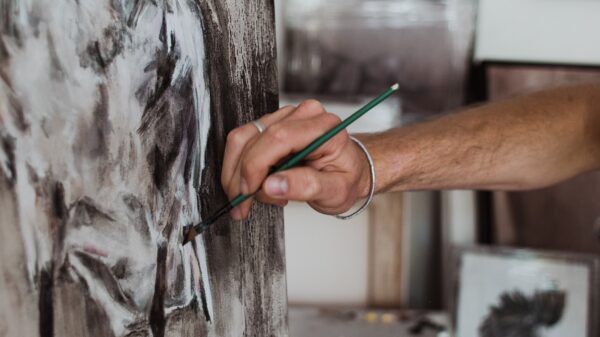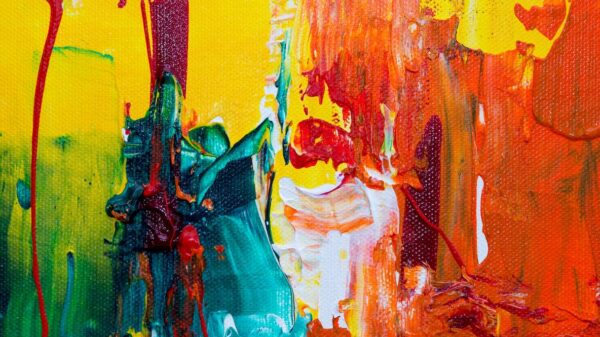Welcome to the world of sculpture, where art comes to life in three-dimensional form! From towering monuments that commemorate historical events to intricate figurines that capture the essence of human emotion, sculpture has been an integral part of our artistic landscape for centuries. Join us on a journey into this fascinating realm as we explore the techniques, history, and beauty of sculpting wonders. Whether you’re a seasoned art enthusiast or simply curious about this timeless craft, prepare to be inspired by the magic of sculpture!
Introduction to Sculpture
Sculpture is one of the oldest and most versatile art forms. It can be found in every culture and civilization throughout history. Sculpture is not only a beautiful art form to behold, but it can also be very therapeutic and relaxing to create.
There are many different types of sculpture, but they can all be divided into two main categories: representational and abstract. Representational sculptures are those that depict recognizable objects or scenes, while abstract sculptures are those that are more open to interpretation.
If you’re interested in trying your hand at sculpture, there are a few things you’ll need to get started. First, you’ll need some materials. Clay is a popular choice for beginners, as it’s relatively easy to work with. You’ll also need some tools, such as carving knives, saws, and chisels. And finally, you’ll need a workspace where you can spread out and get messy!
Once you have your materials and workspace set up, you’re ready to start exploring the world of sculpture. If you’re not sure where to begin, try looking up some tutorials online or borrowing a how-to book from your local library. There’s no wrong way to start sculpting – just let your imagination run wild!
Types of Sculpture
There are many different types of sculpture, each with its own unique characteristics. Below is a list of some of the most common types of sculpture:
-Abstract Sculpture: Abstract sculptures are those that do not represent anything in the natural world. They are usually made from geometric shapes and can be either free-standing or hung on a wall.
-Figurative Sculpture: Figurative sculptures are those that represent the human form, either in realistic or abstract ways. They can be made from a variety of materials, including clay, bronze, marble, and wood.
-Installation Sculpture: Installation sculptures are those that are designed to be installed in a specific location. They can be made from a variety of materials, including metal, glass, and paper.
-Kinetic Sculpture: Kinetic sculptures are those that move in some way. They can be made from a variety of materials, including metal, plastic, and wood.
-Site-Specific Sculpture: Site-specific sculptures are those that are designed to be installed in a specific location. They can be made from a variety of materials, including metal, stone, and concrete.
Famous Sculptors and Their Works
Some of the most famous sculptures in the world were created by renowned artists who have left their mark on history. From Michelangelo’s “David” to Auguste Rodin’s “The Thinker,” these works of art have been celebrated for centuries.
In this article, we will take a look at some of the most famous sculptors and their works. We will also learn about the different techniques and materials they used to create their masterpieces.
Michelangelo: Michelangelo is one of the most well-known artists in history. He is best known for his statue of David, which was completed in 1504. The 17-foot marble statue depicts the Biblical hero David before he fought Goliath.
Auguste Rodin: Auguste Rodin was a French artist who is considered to be the father of modern sculpture. His most famous work is “The Thinker,” which was completed in 1902. The life-size bronze statue depicts a man deep in thought and has become an icon of intellectualism.
Pablo Picasso: Pablo Picasso was a Spanish artist who co-founded the Cubist movement. One of his most famous sculptures is “Head of a Woman,” which was completed in 1909. The Cubist style emphasized geometric shapes and fragmented forms, and Picasso’s sculpture reflects this aesthetic.
Alexander Calder: Alexander Calder was an American artist best known for his mobiles, which are sculptures that move with the breeze. He
Sculpting Techniques and Tools
When it comes to sculpting, there are a variety of different techniques and tools that artists can use to create their masterpieces. Some of the most common techniques include:
-Carving: This technique involves using sharp tools to remove material from the sculpture. Artists will often use a mallet to help them apply pressure to the carving tools.
-Modeling: This technique involves adding and removing material from the sculpture to create the desired shape. Artists will often use clay or wax for modeling.
-Casting: This technique involves creating a mold of the sculpture and then pouring a liquid material, such as plaster or bronze, into the mold. Once the material hardens, it will take on the shape of the mold.
Materials Used in Sculpting
The materials used in sculpting are as varied as the sculptures themselves. Many different types of materials can be used, from traditional stone and clay to more unusual materials like metal and glass. The type of material used will often depend on the type of sculpture being made. For example, a small figurine might be made from clay, while a large outdoor sculpture might be made from stone or metal.
Some sculptors prefer to work with natural materials, while others may use more synthetic materials. Natural materials like stone and wood are often seen as more traditional, while synthetic materials like plastic and fiberglass are often seen as more modern. Ultimately, it is up to the individual sculptor to decide what type of material they want to use.
There are a few things to keep in mind when choosing a material for your sculpture. First, you will need to consider what the sculpture will be used for. If it is going to be on display outdoors, you will need to choose a material that can withstand the elements. Second, you will need to think about how the sculpture will be made. Some materials are easier to work with than others, so if you are new to sculpting you may want to choose a material that is relatively easy to work with. You will need to consider the cost of the materials you use. Some materials can be quite expensive, so if you are on a budget you may want to choose a cheaper material like clay or wood.
No matter
Creative Ways to Display a Sculpture
There are many ways to display a sculpture. It can be placed on a pedestal, hung on the wall, or displayed on a shelf. It can also be placed in the middle of a room or in a garden.
Sculptures can be made from many different materials, including wood, metal, stone, and clay. They can be painted or left natural. Some sculptures are small enough to fit in the palm of your hand, while others are large enough to fill a room.
When choosing a place to display your sculpture, consider the size and shape of the piece, as well as the lighting. You want your sculpture to be seen and appreciated, so choose a spot that will showcase it properly.
The Art Market for Sculptures
When it comes to the art market, sculptures are big business. In fact, in 2017, sculptures accounted for $13.6 billion in global sales, making them the second most popular type of art after paintings.
There are a number of reasons for the high demand for sculptures. For one, they offer a unique way to add three-dimensional beauty and interest to any space. Whether it’s a corporate lobby, a home office or even a backyard garden, sculptures can add an element of sophistication and style.
Another reason for the popularity of sculptures is that they’re often seen as more valuable than other types of art. This is because they require a great deal of skill and talent to create, and there are often only a limited number of copies made. As such, they often appreciate in value over time – making them a wise investment for art collectors.
If you’re thinking about adding a sculpture to your collection, there are a few things to keep in mind. First, consider the size and scale of the piece – it should be in proportion to the space it will be placed in. Second, think about the materials used – some may require more care than others. And finally, don’t forget to factor in the cost – while many sculptures are expensive, there are also plenty of affordable options out there.
Conclusion
We hope this article has been an exciting journey into the world of sculpture. From ancient cultures to contemporary art, we have explored the history and techniques used to create these timeless pieces. Whether you are a professional sculptor or just someone who appreciates beautiful works of art, we believe that sculptures can be appreciated by all. So take some time out of your day and explore how even the simplest materials can be transformed into captivating sculptural wonders.









